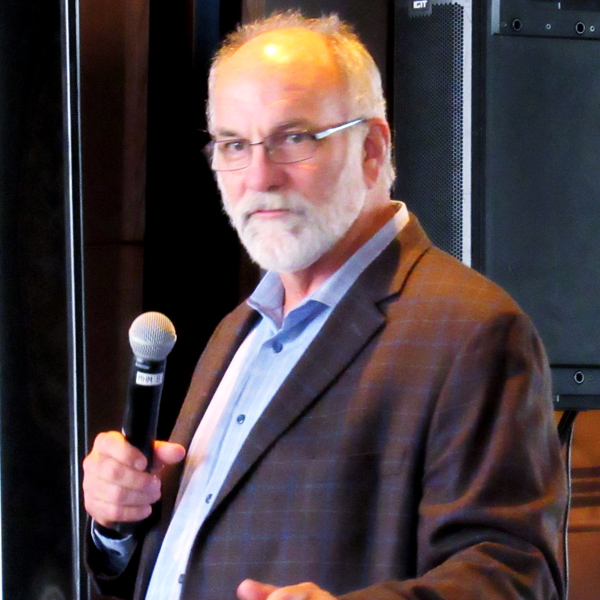MINNEAPOLIS — Adopting a “Minnesota nice” mantra, MISO executives and state regulators engaged in a civil debate over the potential billions of investment in the RTO’s long-range transmission plan.
The discussions during Thursday’s annual meeting of the Organization of MISO States was a departure from MISO’s recently thorny workshops. The grid operator plans to hold a discussion on stakeholder decorum during the December Advisory Committee meeting. (See Tensions Boil over MISO South Attitudes on Long-range Transmission Planning.)
Mississippi Public Service Commissioner Brent Bailey said the potential map of transmission projects is “daunting, depending on how cost allocation goes.” MISO has said its system could require $30 billion worth of project approvals under the most conservative of the three 20-year planning futures. The other more aggressive planning futures could result in another $100 billion worth of transmission projects, including multistate HVDC lines.
“I certainly don’t want to miss the economic opportunities that this transmission may provide,” Bailey said. “But at the same time, we have to make sure we’re not penalizing anyone.”
Entergy and its southern regulators have been vocal about not wanting to share in transmission costs from the footprint’s midwestern region. Both the Mississippi and Louisiana commissions have threatened to initiate an exodus from MISO if it burdens the South with midwestern costs. (See La. Regulators Threaten MISO Departure over Tx Costs; Mississippi PSC Audit Questions MISO Membership.)
The RTO has proposed a separate but equal postage-stamp rate to allocate costs for MISO Midwest and MISO South.
Arkansas Public Service Commissioner Kimberly O’Guinn said MISO can’t assume that transmission is beneficial on a footprint-wide basis because its subregional transfer limit naturally constricts benefits.
MISO President Clair Moeller said the grid operator might have been able to prevent load shedding in MISO South during February’s winter storm if it had expanded transmission links between the region and the Midwest. He said the RTO must examine the reliability benefits of new or upgraded subregional transfer routes.
 Wisconsin Public Service Commissioner Tyler Huebner and Indiana Utility Regulatory Commissioner Sarah Freeman | © RTO Insider LLC
Wisconsin Public Service Commissioner Tyler Huebner and Indiana Utility Regulatory Commissioner Sarah Freeman | © RTO Insider LLCWisconsin Public Service Commissioner Tyler Huebner said the economic losses Texas suffered during the storm’s rolling blackouts ironically could have funded the transmission needed to prevent it.
Reed Smith partner and former FERC Commissioner Colette Honorable said transmission planning is imperative.
“We’ve got to scale up to move these massive amounts of wind and solar,” she told attendees.
Indiana Utility Regulatory Commissioner Sarah Freeman said transmission projects, while they should be a last-resort solution after exploring all local fixes, are integral to moving renewable power and replacing “toxic” generation positioned near vulnerable communities.
O’Guinn said Arkansas must be particularly careful with transmission costs because scores of residential ratepayers are at the poverty level.
Freeman, using a pun, asked a “Clair-ifying” question of Moeller as to whether MISO runs the risk of overbuilding the system with its long-range plan.
Moeller said the $30 billion in projects proposed from MISO’s first 20-year planning future are indisputable. The future accounts for utilities’ integrated resource plans and an 85% probability of their publicly stated retirement announcements and decarbonization goals.
“Today’s economic project is tomorrow’s reliability project,” he said.
 MISO President Clair Moeller speaks on the importance of long-range transmission planning. | © RTO Insider LLC
MISO President Clair Moeller speaks on the importance of long-range transmission planning. | © RTO Insider LLCMoeller said 2011’s $6 billion Multi-Value Project (MVP) portfolio delivered its expected benefits and then some. He said no one within MISO envisioned that an MVP project would be able to supply SPP with hundreds of megawatts to keep the neighboring RTO from disaster during last winter’s cold snap.
“The appetites that we see for the fleet transition are much faster,” Moeller said of today’s environment.
“Not every RTO, as I understand it, is even planning for the future,” Huebner said. “How much worse would we be if we didn’t have MISO’s futures in front of us during this sea change?”
FERC NOPR Gets Unfriendly Reception
Multiple regulatory and utility staff said FERC’s advanced notice of proposed rulemaking (ANOPR) to improve regional transmission planning, cost allocation, and grid operators’ generator interconnection processes is a clear encroachment on states’ jurisdiction. (See FERC Goes Back to the Drawing Board on Tx Planning, Cost Allocation.)
Xcel Energy’s Terri Eaton said she was reminded of the “command and control” aspect of FERC’s Order 1000 in the new NOPR.
“I think we’re past an era of a bright line, and into the era — to borrow a phrase from middle school math — of the Venn diagram. And I think we all need to get comfortable with that,” Acadia Power’s Max Minzner said of jurisdictional issues for transmission planning and resource adequacy.
Minzer, former general counsel for FERC, said as new technologies come into fashion, the energy industry’s spheres of influence over decision making grow and shrink.
“I will concede that the lines are blurred more than they have ever been, and we need to work with that,” Honorable said.
FERC Commissioner James Danly said that ultimate transmission-building and siting decisions should lie with the states, not federal authority. He said states should only veto projects that other states have signed on to when they believe they are totally unnecessary.
“One would hope that one would employ that sparingly if these are good projects,” Danly said.


